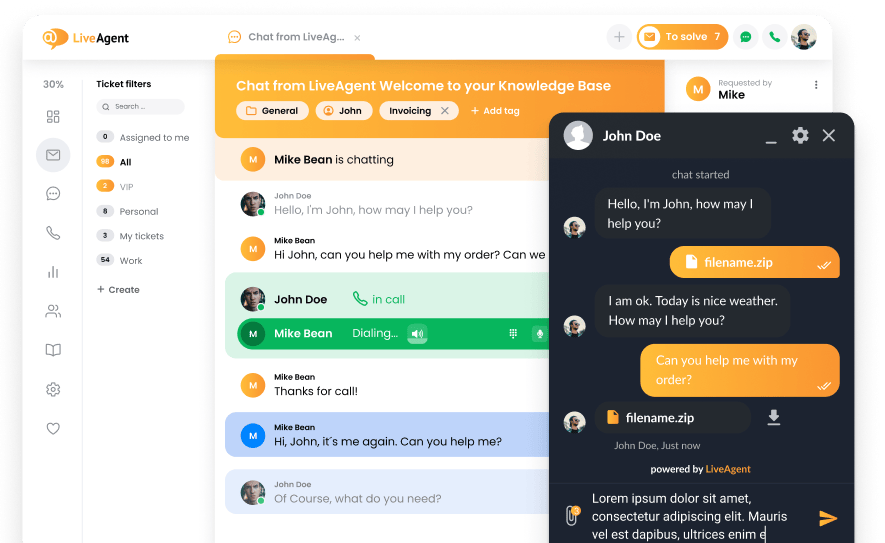What is training?
Training is the process where you prepare your agents so that they are well equipped to serve the customers.
The training procedure consists of how to talk to customers, how to troubleshoot the issues they are having, and giving them proper information about the products that your company sells. Training is something that should not stop, as the agents start working, they solve customer issues, they learn. Every time a new issue is solved, there is always some learning to take from it. Workshops are a good way to train your staff and monitor how much they have learnt.
Frequently Asked Questions
What is training?
Training is a process by which you prepare your agents to fulfill their duties as part of the customer service team. It is a great way to learn new skills, develop your team and, above all, prepare agents to perform their tasks.
How does training improve customer experience?
Improve the customer experience can be achieved by providing employees with thorough training on product knowledge, customer service skills, and problem-solving techniques. This ensures that the employees are equipped to effectively handle a wide range of issues, resulting in faster more accurate resolutions.
Why is training your support team important?
Training is important so that agents can perform their tasks at the appropriate level. It is an opportunity for the development of employees and their skills.
What are the most common elements of every training for customer support agent?
The most common elements of customer service staff training are product knowledge, communication skills courses, communication language, communication policy, customer interaction courses, including customer relationship, conflict resolution and stress management.
![Expert badge]() Expert’s note
Expert’s note
Training is essential for customer service success. It improves skills, knowledge, confidence, and ability to handle various customer scenarios with ease.

10 Customer service goals and objectives to focus on in 2024 (+examples)
To improve customer service, businesses need to innovate, prioritize transparency in client data, and foster a culture of collaboration and creativity. Setting clear, time-oriented goals can boost productivity and drive success. Examples, like Amazon and Apple, demonstrate effective implementation of customer service goals.
10 Customer service goals and objectives to focus on in 2024 (+examples)
Discover the importance of customer service goals for your business' success, and explore real examples of effective implementation strategies.

 Български
Български  Čeština
Čeština  Dansk
Dansk  Deutsch
Deutsch  Eesti
Eesti  Español
Español  Français
Français  Ελληνικα
Ελληνικα  Hrvatski
Hrvatski  Italiano
Italiano  Latviešu
Latviešu  Lietuviškai
Lietuviškai  Magyar
Magyar  Nederlands
Nederlands  Norsk bokmål
Norsk bokmål  Polski
Polski  Română
Română  Русский
Русский  Slovenčina
Slovenčina  Slovenščina
Slovenščina  简体中文
简体中文  Tagalog
Tagalog  Tiếng Việt
Tiếng Việt  العربية
العربية  Português
Português 
 Expert’s note
Expert’s note




